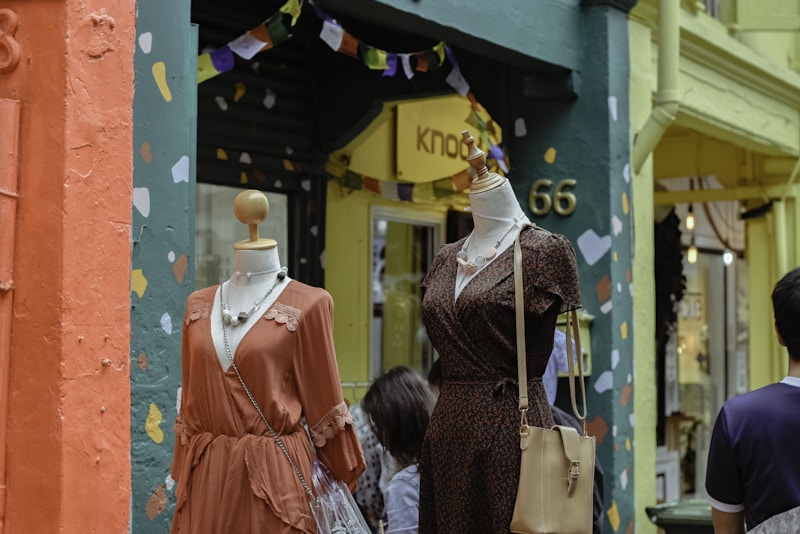Understanding Dress Fitting Stages: A Comprehensive Guide for the Perfect Fit
Understanding Dress Fitting Stages
When it comes to achieving the perfect dress fit, understanding the various fitting stages is crucial. Each stage plays a pivotal role in ensuring that your dress not only looks good but also feels comfortable. Whether you're preparing for a wedding, a formal event, or just wanting to look your best, knowing the fitting process can significantly impact your overall satisfaction with the garment. In this article, we will explore the different stages of dress fitting, common issues, tips for success, and answer some frequently asked questions related to this essential topic.
The Importance of Dress Fitting
Before diving into the stages, it’s important to understand why dress fitting is essential. A well-fitted dress enhances your appearance, boosts your confidence, and showcases your personal style. Dress fitting ensures that the proportions, lengths, and adjustments are to the desired standard, allowing for a seamless and elegant look.
Stages of Dress Fitting
Let's break down the fitting process into distinct stages. Each stage has its unique purpose and outcomes.
| Fitting Stage | Description | Purpose |
| 1. Initial Fitting | Try on the dress for the first time, typically with a basic pattern. | To assess the overall fit and identify any major adjustments. |
| 2. Second Fitting | Include minor adjustments based on the initial fitting feedback. | To refine the fit and make necessary corrections. |
| 3. Final Fitting | Finalize the dress with all adjustments made. | To ensure everything fits perfectly before finishing touches. |
1. Initial Fitting
The initial fitting is typically the most exciting part of the dress-making process. At this stage, you'll try on the garment for the first time, often with a basic pattern or fabric. This fitting allows both the designer and you to gauge how well the dress works with your body shape. It is essential to provide clear feedback and express any concerns about the fit and style. For instance, you might want to adjust the waistline or the length of the skirt. Ensuring accurate measurements and having a discussion about design details can save plenty of time later on.
2. Second Fitting
The second fitting focuses on addressing and refining the adjustments discussed during the initial fitting. By this stage, the designer will have made the necessary modifications, allowing you to see how those changes have worked. This fitting is about detail— checking the neckline, the placement of darts, and ensuring the dress accentuates your best features. You may want to wear the shoes and undergarments you plan to wear on the special occasion to ensure the complete look is evaluated.
3. Final Fitting
The final fitting is the last chance to make any adjustments before you take your dress home. By now, the designer should have incorporated all previous feedback, and the dress should fit like a glove. Check that the hem, seams, and lining are all in harmony with your movements. This is also a great time to consider any last-minute details, such as accessories that will complement your dress. Together with your designer, you can ensure that nothing has been overlooked.
Common Issues in Dress Fitting
Even with careful planning, some common issues might arise during the fitting process. Understanding these problems can help you address them more effectively.
- Size discrepancies: Variations in sizing across different brands can lead to dresses not fitting as expected. Always provide accurate measurements and be open to alterations.
- Style miscommunication: Sometimes, the envisioned design does not translate well to fabric. Ensure clear communication with your designer regarding your preferences.
- Body changes: Bodies can change due to various factors like weight fluctuations. It's important to schedule fittings at appropriate intervals leading up to your event.
Tips for a Successful Dress Fitting
To ensure a smooth fitting experience, here are some tips to keep in mind:
- Bring the right undergarments: Wear the foundation garments you plan to use on the big day to ensure an accurate fit. This includes bras, shapewear, and any accessories.
- Stay hydrated and avoid drastic weight changes: In the weeks leading up to your fitting, maintain a consistent lifestyle to ensure your body remains stable.
- Be honest with your designer: Express your comfort levels and preferences to ensure your dress meets your vision.
Frequently Asked Questions
As you navigate the various dress fitting stages, you may have specific questions. Here are answers to some common queries:
How long does each fitting take?
The duration of each fitting can vary. Typically, an initial fitting takes around 60-90 minutes, while subsequent fittings may last 30-60 minutes depending on the adjustments needed.
Do I need to schedule multiple fittings?
Most custom dresses require at least two to three fittings. However, if adjustments are minimal, you may need fewer sessions.
Is it necessary to wear heels during fittings?
While it's not mandatory, wearing heels similar to those you'll wear at the event can help assess the dress length accurately. This is especially important for long gowns.
Conclusion
Understanding the dress fitting stages is vital for achieving that perfect fit. Each fitting allows for the refinement and enhancement of your dress, ultimately leading to a garment that compliments your figure and style perfectly. Remember to communicate openly with your designer, bring appropriate attire for fittings, and address any concerns as they arise. By following these steps, you can ensure your experience is as enjoyable as possible, resulting in a beautiful dress that makes you feel confident and stunning.
